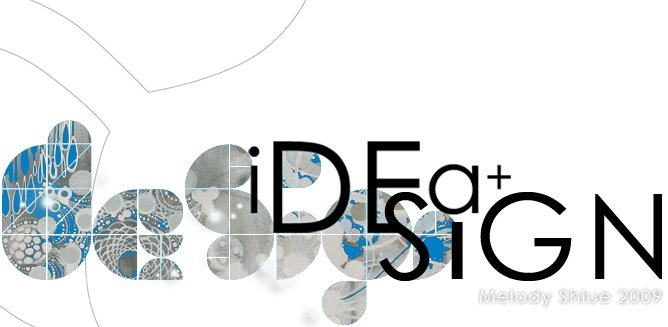I think it's about time I should post up some of the photos I took at the exhibitions I went to.
First one was the Australian International Design Awards 2008 Exhibition; I visited this one simply because it was the first thing I saw after getting confused at where to go.
 The criteria for the award was based on: innovation, functionality, visual appeal, quality, environmental impact, ease of use, and safety. I think fulfilling the purpose of all the above mentioned would definitely have to be something truly amazing.
The criteria for the award was based on: innovation, functionality, visual appeal, quality, environmental impact, ease of use, and safety. I think fulfilling the purpose of all the above mentioned would definitely have to be something truly amazing.
 Well, after thinking that I turned to the first section of display: a green-mold chair, a helmet, and a water bucket. At first I was like 'hmmmm' but then I realized these were designs from the PAST. Reading more into the descriptions I began to understand the functionality and how it made its mark in history on revolutionizing what was even more obsolete. I think with ordinary objects like these, people don't really learn to appreciate its existence and the convenience in life they bring; let alone the intellect behind its making. Just looking at how a simple form changes the entire impact of the solution is profound - from the ground-breaking surf fins by Metro Solutions to the EFTPOS device by Ingenico International convinced me of their eligible presence behind the glass panes.
Well, after thinking that I turned to the first section of display: a green-mold chair, a helmet, and a water bucket. At first I was like 'hmmmm' but then I realized these were designs from the PAST. Reading more into the descriptions I began to understand the functionality and how it made its mark in history on revolutionizing what was even more obsolete. I think with ordinary objects like these, people don't really learn to appreciate its existence and the convenience in life they bring; let alone the intellect behind its making. Just looking at how a simple form changes the entire impact of the solution is profound - from the ground-breaking surf fins by Metro Solutions to the EFTPOS device by Ingenico International convinced me of their eligible presence behind the glass panes.
Next I moved towards the back of the exhibition. It was the PowerHouse Museum Selection 2008. The designs on display ranged from eco-friendly windows to newly improved LEDs; some were designed by design graduates. I think this part of the exhibition is on the time of NOW - in the sense that we are now at a stage where sustainability is the new word that's pushing the frontier of design possibilites. The Lightway Window by Damian Savio uses transparent photovoltaic cells which powers OLEDs at night and can be deployed to use as a portable lamp; as seen below:

Then there were the innovations by students boxed in the next few displays. So far the exhibition flows clockwise starting from the entrance in chronological order, which I think has its own meaning of time travel. Anyway, the following displays showed some interesting technological innovations that improve the benefits of users, e.g. the Flaik personal tracking device for skiers and snowboarders created by CMD Product Design. This piece of electronic allows interactive data that digitally records and synchronizes the skier's performance & snow experience which can be shared on a web portal. This is the winner of the AIDA Top Accolade prize. Shown in front is a series of concept drawings of the design - I was amazed at the resolution! I think the professionalism in the pencil work is out of question; likewise the rest of the designs all showed a panel of the concept generation behind the final product, and I think it showed to some extent the respect to the designers and how they manifested the quality and integrity into their own works of avant garde. This was a good intention of the exhibition I thought, providing a good insight into the design process to educate and inspire viewers of all ages.



Finally I reached around the corner to find some FUTURISTIC designs - one dominant model was the Sunswift solar car designed by the UNSW Solar Racing Team! :D
I am not being biased but I don't really like how it's displayed in a corner - facing the back! Even though it's got a 1:6 model encased, a video coverage, 2 - 3 description boards plus a hero shot photograph - all this seemed kinda pointless when it's really not located at the pride of place! I guess solar cars ain't something promising five years down the track yet...

Coming out of the corner I came face to face a final set of displays on construction development. Something I am not that interested in but still took a quick skim through it. I stopped to take a closer look at the architectural model that was so refined in detail. It's really beautiful by itself; I don't think I can ever have the hands to make such intricate objects! (yes, I have a lot to improve in terms of my model-making skills...) Here are some photos of it:


I am not quite sure but I think this last section rounds up the exhibition in the sense that it's protecting the past. The architectural model is actually a physical demonstration of the Mosaic Wall Preservation Project (President's Award in the Engineering Division); I mean it's a different approach to environmental design, but I think on a conceptual level of the exhibition it means that although we are moving forward we should always take a moment to look back and value the milestones that made us who we are today. This, also completes the circulation of the exhibition, connecting back to the starting point - the displays of the past.
Overall I quite enjoyed this exhibition even though it was rather short. But I think it made me think a lot in terms of value on a variety of levels. Hopefully I have described the virtual tour well!!

More to come: INSPIRED! Exhibition


















No comments:
Post a Comment